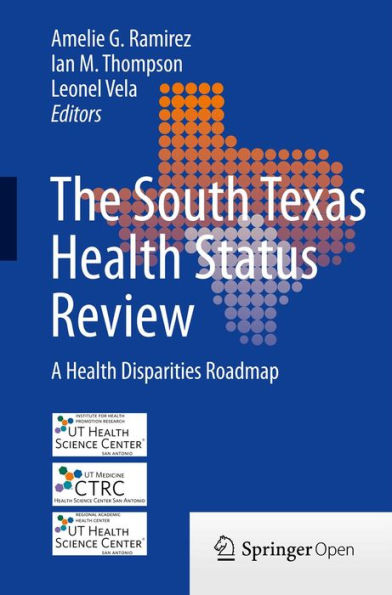This book is a roadmap of the exact health disparities that burden the health of South Texas residents, especially Hispanics, compared to the rest of Texas and nation. This type of knowledge has the potential to fuel and motivate researchers and public health leaders to create and shape interventions to reverse those health disparities. Most notably, focus on obesity and diabetes prevention efforts and modifiable risk factors—such as nutrition, reproductive factors and access to health care—has significant potential to reduce the burden of disease in South Texas communities.South Texas, a 38-county region that spans 45,000 square miles along the Texas-Mexico border northward to the area around metropolitan Bexar County (home to San Antonio), is home to 18% of the state’s population. Yet South Texas residents, who are 68% Hispanic, struggle with lower educational levels, less income and less access to health care—and, as a result, suffer from a wide variety of health disparities. To study the health status and identify the exact health disparities that exist in the region, researchers from The UT Health Science Center at San Antonio teamed with researchers from the Texas Department of State Health Services to develop the South Texas Health Status Review.The Review team analyzed a variety of the latest county, state and national data to compare South Texas’ incidence, prevalence and mortality rates for more than 35 health indicators—from cancers to chronic diseases like diabetes to communicable diseases like HIV/AIDS to maternal health and even environmental health—to the rest of Texas and the nation by age, sex, race/ethnicity and rural/urban location.
1136772811
The South Texas Health Status Review: A Health Disparities Roadmap
This book is a roadmap of the exact health disparities that burden the health of South Texas residents, especially Hispanics, compared to the rest of Texas and nation. This type of knowledge has the potential to fuel and motivate researchers and public health leaders to create and shape interventions to reverse those health disparities. Most notably, focus on obesity and diabetes prevention efforts and modifiable risk factors—such as nutrition, reproductive factors and access to health care—has significant potential to reduce the burden of disease in South Texas communities.South Texas, a 38-county region that spans 45,000 square miles along the Texas-Mexico border northward to the area around metropolitan Bexar County (home to San Antonio), is home to 18% of the state’s population. Yet South Texas residents, who are 68% Hispanic, struggle with lower educational levels, less income and less access to health care—and, as a result, suffer from a wide variety of health disparities. To study the health status and identify the exact health disparities that exist in the region, researchers from The UT Health Science Center at San Antonio teamed with researchers from the Texas Department of State Health Services to develop the South Texas Health Status Review.The Review team analyzed a variety of the latest county, state and national data to compare South Texas’ incidence, prevalence and mortality rates for more than 35 health indicators—from cancers to chronic diseases like diabetes to communicable diseases like HIV/AIDS to maternal health and even environmental health—to the rest of Texas and the nation by age, sex, race/ethnicity and rural/urban location.
0.0
In Stock
5
1

The South Texas Health Status Review: A Health Disparities Roadmap
138
The South Texas Health Status Review: A Health Disparities Roadmap
138Related collections and offers
0.0
In Stock

Product Details
| ISBN-13: | 9783319002330 |
|---|---|
| Publisher: | Springer-Verlag New York, LLC |
| Publication date: | 06/29/2013 |
| Sold by: | Barnes & Noble |
| Format: | eBook |
| Pages: | 138 |
| File size: | 17 MB |
| Note: | This product may take a few minutes to download. |
From the B&N Reads Blog
